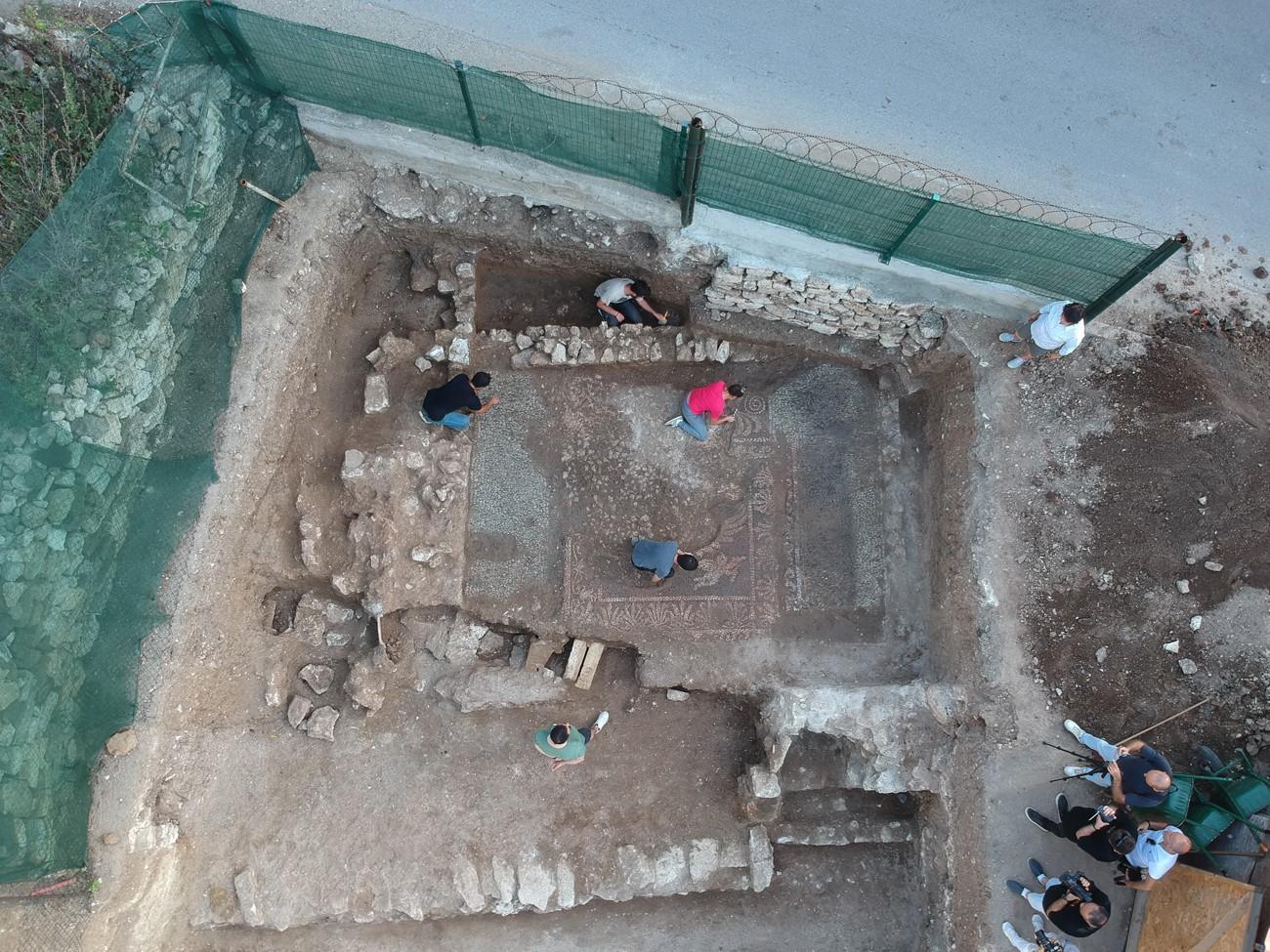Sinop’s mosaics belong to dining room of wealthy family
SİNOP

The Hellenistic-era pebble mosaics found during the archaeological excavations in the Balatlar Building Complex in the northern province of Sinop have been revealed to belong to the “dining room of a wealthy family.”
New findings of importance for the scientific world continue to emerge during the excavations in the Balatlar Building Complex, which is said to date back to more than 2,000 years ago, in the city center of Sinop.
The unexpected structure, a Hellenistic-era mosaics, emerged during the excavations carried out under the leadership of Professor Gülgün Köroğlu. It was recently determined that the artifact belonged to the “dining room of a wealthy family from the 4th century B.C.”
Sinop Provincial Culture and Tourism Director Metin Süren said, “Pebble stone mosaics that are rarely seen in the remains of buildings dating back to the classical period and the Hellenistic period in the 4th century B.C. have been unearthed in the Balatlar excavations that have been carried out for 11 years.”
Stating that Sinop may be among the most important ancient cities in the world after Rome, Süren said, “Sinop, which has hosted many civilizations from the prehistoric period to the present, is one of the most important ancient cities in the world, as well as one of the most important Seljuk cities. We see it from the ancient ruins in the city and from the Seljuk-era artifacts that have taken their place in every corner of our districts dating back to the Seljuk period.”
“We found these mosaics during the recent excavations. There is also a claim that these pebble mosaics are unique in our country and may be rare in the world, perhaps they are found only in ancient cities in Greece or Rome. There are those who claim that Sinop is such an important ancient city that it may be one of the most important ancient cities in the world after Rome, but unfortunately, there are no scientific excavations to confirm these claims except for Balatlar, although nearly 150-200 mounds have been identified and registered so far,” he added.
Süren noted that the mosaic could be evaluated in two types: “The motifs used in religious buildings and the motifs used in residences.”
“Restoration work on these artifacts continues. They need to be restored for display. Restorers and the excavation director continue their restoration work with a delegation. Publication studies on this subject also continue. It will turn into a book. These pebble mosaics will register our city as one of the largest ancient cities in the world,” he added.
















